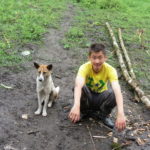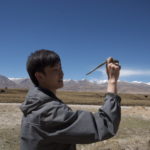Kai Wang Biography
-
As a herp-enthusiast, Kai started catching and keeping reptiles and amphibians in southwestern China at a very young age. Ever since he read the book, Fauna Sinica Reptilia, at the age of 14, Kai was inspired by the landmark figure of Chinese herpetologist, Dr. Ermi Zhao. It was at that time that he made up his mind to become a herpetologist in the future. During his undergraduate time at Washington State University, Kai was actively involved in undergraduate researches. He took independent research projects on anti-predator response of salamander larvae and courtship behavior of Knobby Newts in Brunner’s Lab of disease ecology and Verrell’s Lab of animal behavior. Later Kai sought the summer intern position at Dr. Che Jing’s Lab of herpetile diversity and evolution at the Kunming Institute of Zoology (KIZ), Chinese Academy of Sciences, where he joined the herpetofaunal diversity survey of Tibet in 2012, 2013, and 2015. Kai surveyed the untouched wilderness of Tibet and adjacent areas with other Chinese herpetologists, which resulted in descriptions of multiple herpetile species that were new to science. Among the species he described, agamid lizards of the genus Japalura attract him mostly. The unique river-based distribution patterns and diverse morphologies of these lizards raised Kai’s interests in phylogeography and speciation mechanisms. For his master research, Kai is planning to develop Japalura as a modal system to understand the evolution of agamid lizards and the biogeography of the Three Parallel Rivers in southwestern China.
Read more about Kai’s work in China and Tibet here



